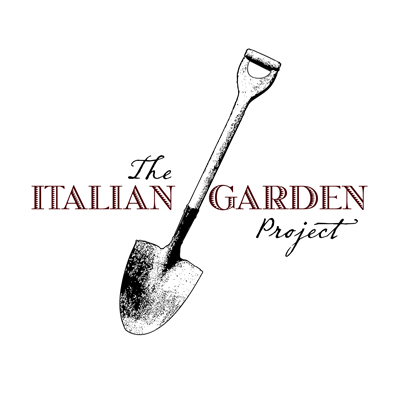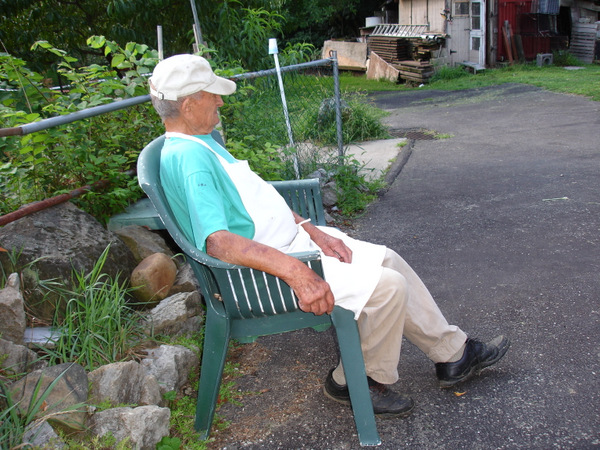Canning Tomatoes with Mr. Ciccone: A Memorial Tribute
Giovanni Ciccone
1920 - 2015
The day I spent canning tomatoes with Mr. Ciccone was one of the best days ever! Even though it involved hours of messy, continuous work, I enjoyed every minute, feeling fortunate to have the opportunity to learn from someone so knowledgeable about the process.
We had picked tomatoes several days before…
…and laid them out on a table in the garage to ripen.
Mr. C was waiting for me when I arrived at 8 am. He had been up for several hours preparing for the day.
He had already assembled the electric tomato grinder/strainer and washed the pots and utensils. When he has a task ahead of him, especially when it involves the garden or food, he suddenly looks and acts twenty years younger. It is a joy to watch the transformation. When he puts on his butcher’s apron, whether to make sausage, prosciutto, or wine, he comes to life with energy and enthusiasm that’s infectious.
He had set up the propane burner to cook the sauce before putting it into jars. But first things first, and onto the cooktop went the espresso pot.
He insisted we have espresso corretto, espresso “corrected” with a splash of whiskey.
I had taken the jars and lids home with me to wash. I sterilized the jars by running them through the dishwasher on the hottest setting and then immersing them in a pot of boiling water for several minutes.
After washing the tomatoes, we cut them and put them into the grinder/strainer.
The tomatoes funnel downward and are mashed …
…and the skin and seeds are separated from the juice and pulp.
The skin and seeds are collected and passed through the machine again…
…removing any remaining juice and pulp.
At noon, Mr. C’s friend Bruno arrived with lunch that his wife Rosina had prepared. Rosina is from the same hometown as Mr. Ciccone, San Demetrio ne’ Vestini in the province of L’Aquila. She often makes dishes that are familar to him like…
tacozze, a homemade, hand-cut pasta that was incredibly delicious.
Rosina also sent homemade sausage and fritelle di zucchini, (zucchini fritters). And of course, no meal would be complete without Mr. C’s homemade wine. It was a feast fit for kings.
While we ate, the sauce (tomatoes only) simmered on the propane burner and would continue to do so for several hours. He stirred it periodically to check if it had reached the right consistency. At his direction, I went to the garden to pick fresh “busaligol” (basil in dialect). Several leaves were added to each jar before ladling in the sauce.
After appyling the lids and tightening the bands, he turned the hot jars upside-down.
He covered them with a heavy packing blanket to retain the heat for as long as possible to continue to disinfect the sauce-filled jars and seal the lids.
To complete the process, the tomato scraps were dumped back into the garden where they would decompose and nourish next season's crop.




















